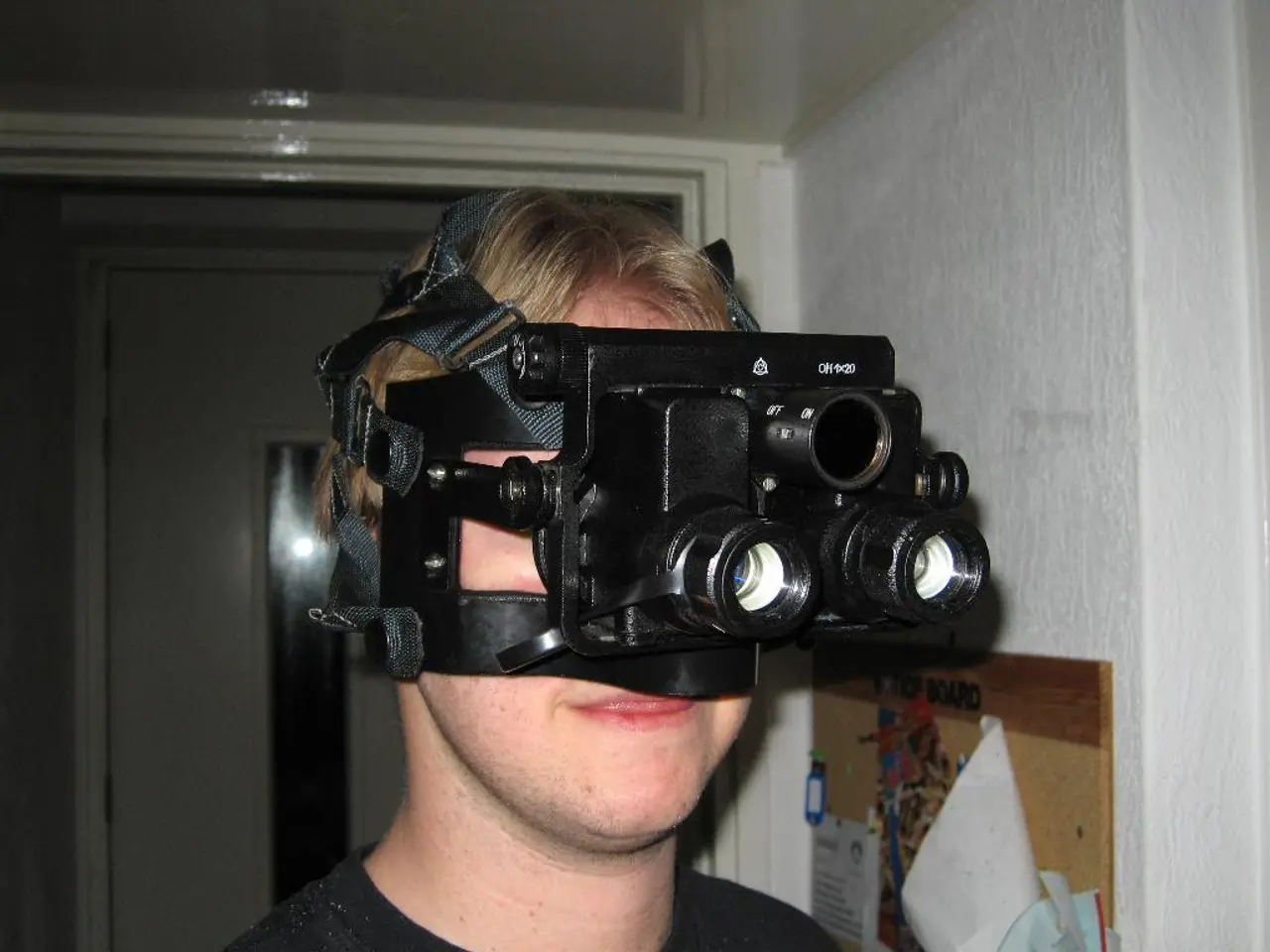Immersive Technology Allows Medical Students to Engage in Realistic Case Studies within a VR Environment
Virtual Reality Transforms Nursing and Medical Education
In the realm of nursing and medical education, virtual reality (VR) is rapidly becoming a central and effective tool. This innovative technology is enhancing academic performance, reducing training time and costs, and addressing workforce shortages.
Research from Nightingale College (2020-2025) indicates that nursing students using VR consistently score about 5.9% higher on assignments and perform significantly better on final exams compared to those using traditional training methods. VR training also takes 22% less time and is about 40% less expensive than traditional physical simulation [1][3][5].
At Augusta University, VR scenes have been created in collaboration with the university's Center for Instructional Innovation, using a 360-degree video camera and microphones. These simulations include immersive, end-of-life VR scenes that students can view on an Oculus VR headset. About 135 nursing students pursuing bachelor's degrees will go through these VR simulations this fall [2].
Each VR scene lasts one to three minutes and involves role-playing various end-of-life scenarios. The College of Nursing at Augusta University tested these scenes with eight students pursuing their master's degrees and is incorporating them as part of its palliative care nursing course content this fall [6].
Purdue University Global provides students with video tutorials and step-by-step documentation on setting up their VR headsets and downloading the VR app. They launched the VR experience during the fall 2020 semester, and students purchased Oculus VR headsets to use the VR application [3].
Purdue University Global's online nursing program has developed immersive simulations using 3D animation in VR to help students learn essential skills such as chest tube insertion and endotracheal intubation. They also offer tech support over videoconference for their VR app, and the university's VR app vendor also provides tech support [3].
Meanwhile, at New York University's Grossman School of Medicine, VR and AR are being used to visualize and learn about the human body, replacing traditional dissection of cadavers. The VR technology used includes the Lenovo Varjo, Oculus Quest 2, and HTC Vive headsets. The VR app provides students with anytime, anywhere access to digitized versions of the human body [4].
The VR simulations at New York University's Grossman School of Medicine are kept short and concise to prevent feelings of dizziness and nausea. They enable students to experience patient perspectives more vividly, fostering empathy, especially in sensitive contexts like end-of-life care [4]. The school uses photogrammetry software to create 3D models of the human body for VR viewing [4].
VR, particularly through immersive simulations, is proving to be a transformative modality in nursing education. It not only improves measurable academic outcomes and reduces costs but also enhances experiential learning and empathy, which are critical for holistic patient care, especially in end-of-life and complex care situations [1][3][4][5].
References: [1] Nightingale College. (2020-2025). Virtual Reality in Nursing Education: A Comprehensive Review. [2] Augusta University. (2021). Augusta University Nursing Students to Use Virtual Reality for End-of-Life Training. [3] Purdue University Global. (2020). Purdue University Global Introduces Virtual Reality to Nursing Education. [4] New York University. (2021). NYU Grossman School of Medicine Embraces Virtual and Augmented Reality for Medical Education. [5] American Association of Colleges of Nursing. (2019). The Impact of Virtual Reality on Nursing Education. [6] Augusta University. (2021). Augusta University's Virtual Reality Scenes for Palliative Care Nursing.
- Virtual reality (VR) technologies are being applied not only in nursing and medical education but also in health-and-wellness, fitness-and-exercise, and mental-health, offering innovative therapies-and-treatments.
- In the field of education-and-self-development, online-education platforms like Purdue University Global offer VR training for various skills, including VR simulations for chest tube insertion and endotracheal intubation, making learning more accessible and effective.
- Technology advancements, such as VR, are changing the face of mental health care, offering immersive experiences and enhancing patient perspectives, essential for fostering empathy.
- Science and technology continue to intertwine in our daily lives, impacting diverse sectors like education, health care, and more, revolutionizing learning, health-and-wellness, and overall personal development.




